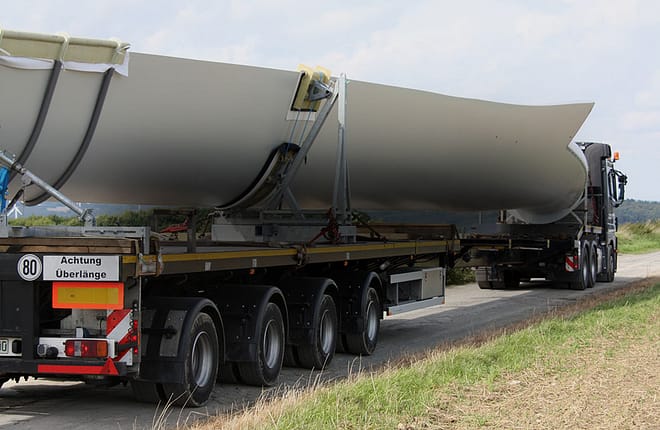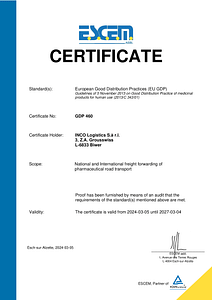Special transport in Europe comes in different shapes and sizes, covering a wide range of needs. From large infrastructure projects such as high-speed rail lines to transporting oversized goods with specialised vehicles, everything is possible in Europe.
Moving heavy, oversized goods from one place to another can be a daunting task. In Europe, both oversize transport and heavy transport of oversize goods are more challenging due to the different terrain and regulations in each country. To ensure the successful delivery of large shipments across the continent, it is imperative that companies use experienced professionals who are familiar with the complexities of European freight transport. With our help, you can safely and efficiently move shipments that are too large for normal trucks or ships between countries without any delays or complications.
We are happy to carry up to 3m excess width under tarpaulin or open up to 4.5m for you throughout Europe.
What exactly is meant by special transport and which goods or vehicles are considered special?
A special transport means the transport of goods or vehicles which, because of their size, shape, weight, sensitivity or other special characteristics, cannot be transported by conventional means of transport or on normal roads. This type of transport requires special arrangements, vehicles, equipment and permits to ensure the safety and integrity of the load and the safety of other road users.
The goods or vehicles that can be considered special or for special transport can be very diverse and depend on the specific requirements and regulations. Here are some examples of goods or vehicles that are often considered special:
Heavy or oversized goods: heavy machinery, large industrial equipment, wind turbines, transformers or other parts that exceed allowable weight or size limits.
Sensitive or fragile goods: Medical devices, laboratory equipment, works of art or other fragile goods that require particularly careful handling and securing.
Dangerous goods: Chemicals, radioactive materials or other hazardous materials that require special safety regulations and permits.
Refrigerated or fresh goods: Perishable goods that require a controlled temperature during transport, such as food or medical products.
Special vehicles: Large construction machinery, fire engines, militi
What special training or certification do the drivers or staff involved in a special transport need?
The personnel involved in a special transport must have specific training and certifications to deal with the special requirements and challenges of this demanding transport. Depending on the type of special transport and the applicable regulations, different training and certifications may be required. Here are some examples:
Driver’s licence: drivers of vehicles involved in a special transport must have a valid driver’s licence required for the specific vehicles or loads involved in the transport. In some cases, an additional driver’s licence may be required for the transport of oversized or heavy goods.
Training to handle special cargo: The personnel in charge of loading, securing and unloading the special cargo should receive special training to ensure that the cargo is handled properly and does not pose a danger to themselves or others.
Transport of dangerous goods: If the special transport involves dangerous goods, the personnel involved must have the appropriate dangerous goods training and certification to comply with the specific regulations and safety measures.
Technical training: Personnel operating special transport vehicles or equipment should receive technical training to handle the vehicles and equipment safely and to identify possible te
How are traffic disruptions and delays minimised when a special transport is carried out?
Minimising traffic disruptions and delays is crucial when carrying out a special transport, as this type of transport already presents additional challenges due to its special requirements and size. Here are some measures that can be taken to minimise traffic disruptions and delays during a special transport:
Careful planning: thorough planning is key to minimising potential traffic disruptions. This includes selecting the best transport route, considering traffic conditions and rush hours, and identifying potential bottlenecks or obstacles along the route.
Communicate with authorities and residents in advance: It is important to contact the relevant authorities and residents at an early stage to inform the transport and clarify possible restrictions or concerns. Cooperation with the authorities and consideration of residents’ interests can help to minimise possible delays.
Escort vehicles and escorts: The use of escort vehicles or escorts during special transport can help to regulate traffic flow, warn other road users and minimise possible traffic obstructions.
Traffic diversions: In some cases, temporary traffic diversions may be put in place to allow the special transport to pass safely and minimise traffic congestion.
Special transport
Special transport in Europe comes in different shapes and sizes, covering a wide range of needs. From large infrastructure projects such as high-speed rail lines to transporting oversized goods with specialised vehicles, everything is possible in Europe.
Moving heavy, oversized goods from one place to another can be a daunting task. In Europe, both oversize transport and heavy transport of oversize goods are more challenging due to the different terrain and regulations in each country. To ensure the successful delivery of large shipments across the continent, it is imperative that companies use experienced professionals who are familiar with the complexities of European freight transport. With our help, you can safely and efficiently move shipments that are too large for normal trucks or ships between countries without any delays or complications.
We are happy to carry up to 3m excess width under tarpaulin or open up to 4.5m for you throughout Europe.





